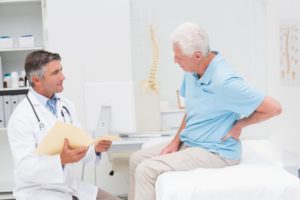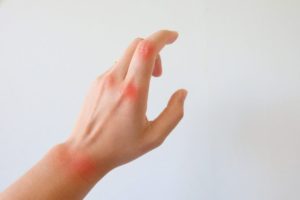What is Osteoarthritis?
Osteoarthritis is the most prevalent form of arthritis and is the most common joint disorder in the United States. It affects over 30 million adults in the US with many people being 60 years of age or older. The cartilage that protects and cushions your bone joints wears down over time. The most common joints that may need treatment because of osteoarthritis are the knees, hips, hands and spine. There are treatment options available to people with osteoarthritis, but any joint damage can’t be reversed. If the symptoms haven’t progressed too far there are ways to slow the disease and improve joint function.
Osteoarthritis Causes
As we said earlier, the breakdown of your cartilage is the cause of osteoarthritis, but are there things that speed up this process or make it worse? Generally overuse of your joints wears the cartilage down faster, but it occurs in 10-13% of people over the age of 60, so it’s more common as we get older. As the cartilage gets damaged it can also cause bone spurs around your joints, which are basically small bony overgrowths that can pinch or press on nerves and cause pain.
There is also something called secondary osteoarthritis which happens when it’s onset is caused by a disease or medical condition rather than simply age or use. Obesity can put more stress on the joints, and wear the cartilage down much faster. Diabetes also causes inflammation, which can cause osteoarthritis. If you’re injured at a joint or have a surgery at the joint it can increase the risk of developing osteoarthritis.
Osteoarthritis Symptoms
One of the most prominent symptoms you’ll notice in joints suffering from osteoarthritis is pain during or after movement. They may also be stiff in the morning or after not using them for a while, as well as feeling some tenderness if any pressure is put on the joint. There is also some loss of range of motion and flexibility in the joint, plus a “grating” sensation along with a pop or crack. Another noticeable symptom of osteoarthritis is swelling around the joint caused by soft tissue inflammation.
Osteoarthritis of the Spine
Osteoarthritis can be called degenerative joint disease, so it makes sense for the spine to go through something called degenerative disc disease. Your spine is made up of 24 moveable vertebrae which can flex and bend together allowing you to hunch over, bend backwards, and twist your spine. However, like other joints in your body there is a cushioning mechanism to assist in spinal motion. These are spinal discs, which are made of cartilage that can be worn down like anything else. The symptoms are similar to other kinds of osteoarthritis, which is pain in the neck or back, stiffness, and includes possible weakness or numbness in the legs or arms if it’s severely affecting the spinal nerves.
Bone spurs caused by osteoarthritis of the spine can put pressure on the spinal nerves, which cause pain and can be debilitating. Another possible source of pain is when the spinal discs degenerate over time, since they dehydrate and lose volume, they can bulge and rupture. These are herniated discs which also put pressure on spinal nerves having a similar effect as a bone spur. There are many treatments to osteoarthritis of the spine such as physical therapy, medications, epidural injections, laser spine surgery, discectomy and others. The treatment plan will depend on the unique situation and health status of each patient.
Osteoarthritis vs Rheumatoid Arthritis
These are two types of arthritis that both cause stiff and painful joints, however what causes them and when they usually happen are quite different. Osteoarthritis happens as you get older and is a degenerative disease. Rheumatoid arthritis can happen at any age and is an autoimmune condition, which means your body’s own immune system attacks your joints. The joints affected are also different. Rheumatoid arthritis will have an impact on the smaller joints like hands and feet, while osteoarthritis more prominently damages weight bearing ones like hips, knees and spine.
 RA comes with additional symptoms that aren’t associated with osteoarthritis such as fatigue, low fevers, low appetite and rarely lumps that grow under the skin. Treating RA is also different in that it’s aim is to stop the body from attacking itself. However, they share the goal of easing pain and improving joint movement, so many treatments are applicable to both types of arthritis.
RA comes with additional symptoms that aren’t associated with osteoarthritis such as fatigue, low fevers, low appetite and rarely lumps that grow under the skin. Treating RA is also different in that it’s aim is to stop the body from attacking itself. However, they share the goal of easing pain and improving joint movement, so many treatments are applicable to both types of arthritis.
Osteoarthritis Treatment
Dealing with osteoarthritis can be daunting, but doing the right treatments can help slow the degeneration of your joints and ease pain with movement. Exercise is something that can help with osteoarthritis, particularly in the case of weight loss. If you have extra weight bearing down on your joints, shedding a few pounds will put less stress on your joints and make movement less painful.
 Stretching is one of the best things you can do to increase flexibility, range of motion and lubricate your points. Working with a physical therapist helps so they can guide you and give you specific exercise plans that work for your mobility level. For aerobic exercises you’ll want to choose activities that are easy on the joints such as walking or some kind of water aerobic.
Stretching is one of the best things you can do to increase flexibility, range of motion and lubricate your points. Working with a physical therapist helps so they can guide you and give you specific exercise plans that work for your mobility level. For aerobic exercises you’ll want to choose activities that are easy on the joints such as walking or some kind of water aerobic.
Osteoarthritis Medications
You’ll want to consult with your doctor before starting any kind of medication. There are a number of over the counter medications such as aspirin, ibuprofen and naproxen that can help control pain and inflammation, but if these aren’t working there are other avenues to explore. You can have a corticosteroid injection at the joint you’re experiencing pain to get targeted and long lasting pain relief if your pain levels aren’t manageable with oral medicine. In case of spinal osteoarthritis you can get an epidural injection which targets the area in the back causing pain.


